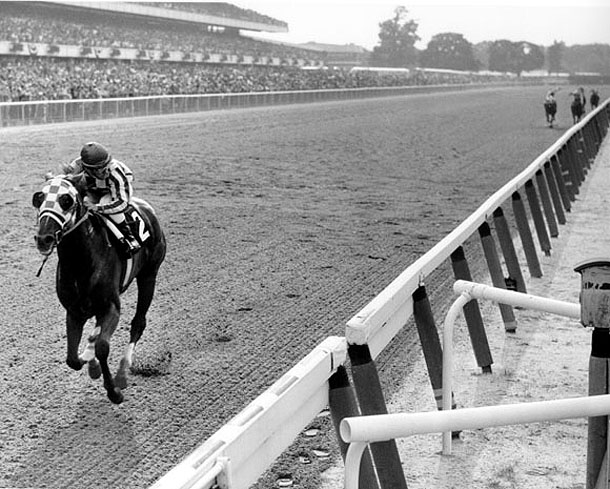Early adopters have an advantage for awhile, sure, but will technology ultimately make for narrower margins of victory? What if we’re all optimized and enhanced, if we all become the exception to nature, if nature itself is transformed? Will a victory by many lengths even be possible? Will it even be imaginable to be one in a million?
The preamble to William Nack’s classic 1990 Sports Illustrated piece about the amazing career of Secretariat, a racehorse that not only had a great heart but had a great heart:
Just before noon the horse was led haltingly into a van next to the stallion bam, and there a concentrated barbiturate was injected into his jugular. Forty-five seconds later there was a crash as the stallion collapsed. His body was trucked immediately to Lexington, Ky., where Dr. Thomas Swerczek, a professor of veterinary science at the University of Kentucky, performed the necropsy. All of the horse’s vital organs were normal in size except for the heart.
“We were all shocked,” Swerczek said. “I’ve seen and done thousands of autopsies on horses, and nothing I’d ever seen compared to it. The heart of the average horse weighs about nine pounds. This was almost twice the average size, and a third larger than any equine heart I’d ever seen. And it wasn’t pathologically enlarged. All the chambers and the valves were normal. It was just larger. I think it told us why he was able to do what he did.”•
Tags: Secretariat, Thomas Swerczek, William Nack

